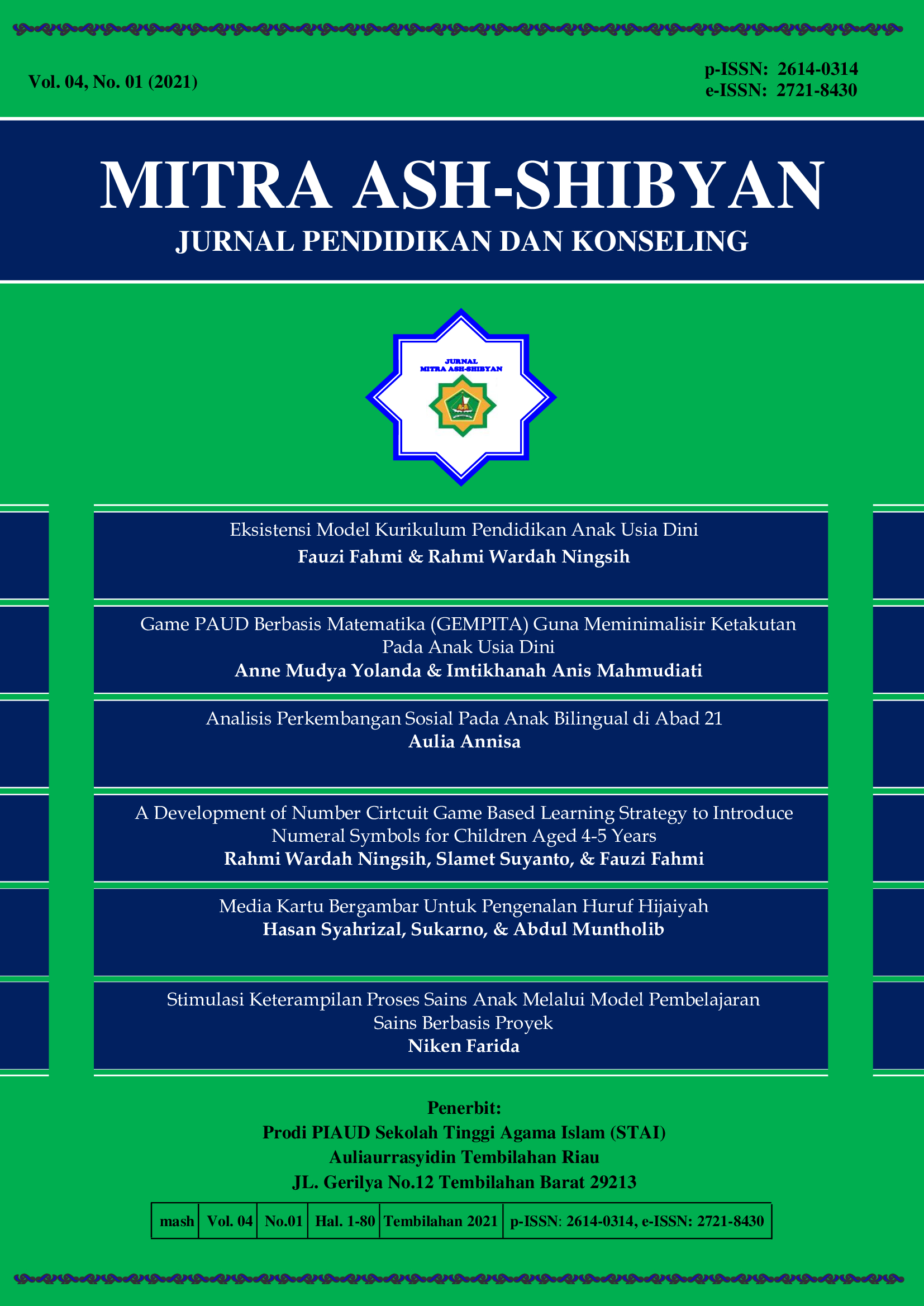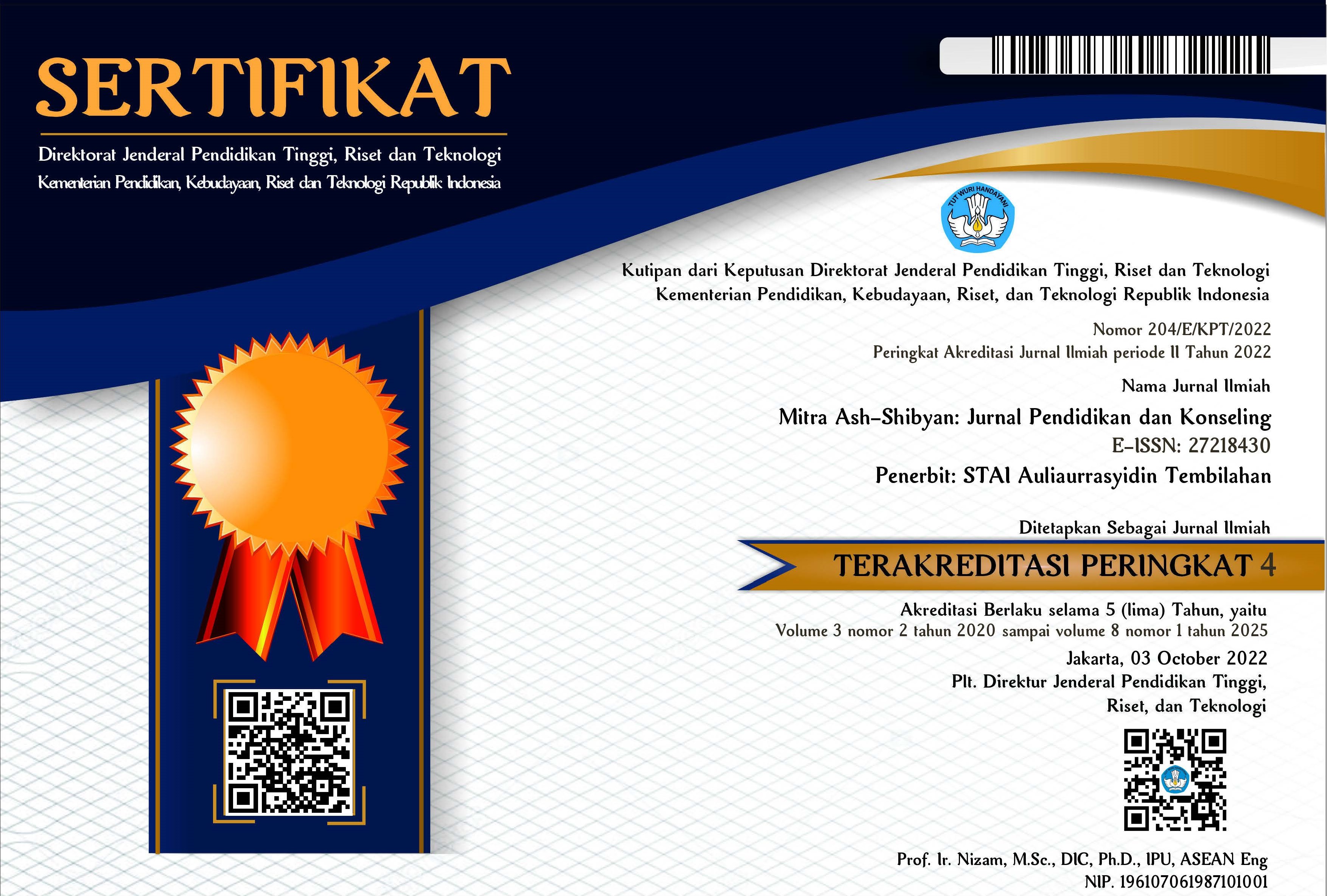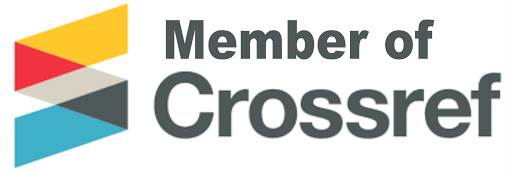Analisis Perkembangan Sosial Pada Anak Bilingual di Abad 21
DOI:
https://doi.org/10.46963/mash.v4i01.223Keywords:
Bilingual, Social development, Early ChildhoodAbstract
Communication is an important requirement in order to adapt to the broad social environment in the 21st century. One of the efforts made is the use of two languages (bilingual) in everyday life. However, parents unconsciously put children into a world with language development tasks that are more complex than the competencies that children should have. This of course will affect social development and children's ability to interact with the environment. This study analyzes the use of bilinguals in terms of children's social competence and social behavior. The research method uses literature studies by analyzing 20 books and scientific articles related to bilingualism and children's social development. The data analysis technique used content analysis related to the phenomena, causes and effects of social development in children using bilinguals. The results of the analysis show that the use of bilingual children has a positive and negative side to the child's social development. The positive thing is that bilingual children can easily adapt outside their social environment as a means of communication. There will be a sense of pride in the child because he can master more than one language. But the negative thing is, some of the bilingual children will find it difficult to understand new concepts in a different language, so they often feel depressed. In addition, there is a gap between children and their social environment.
Downloads
References
Annisa, A., & Sutapa, P. (2019). Scaffolding Strategies to Increase Children Science Interest. 296 (ICSIE 2018), 279–284. https://doi.org/10.2991/icsie-18.2019.50
Annisa, A., & Sutapa, P. (2019). The Implementation of Nature-based Learning Models to Improve Children’s Motor Skills. Jurnal Obsesi : Jurnal Pendidikan Anak Usia Dini, 3(1), 170. https://doi.org/10.31004/obsesi.v3i1.140
Ballantyne, K. G., Sanderman, A. R., & Levy, J. (2008). Educating English language learners: Building teacher capacity. National Clearinghouse for English Language Acquisition & Language Instruction Educational Programs. http://www.ncela.gwu.edu/practice/mainstream_teachers.htm
Chaer, A., & Agustina, L. (1995). Sosiolinguistik Perkenalan Awal. Rineka Cipta.
Elliot, S. N., & Gresham, F. M. (1987). Children’s Social Skills: Assessment and Classification Practices. Journal of Counseling & Development, 66(2), 96–99. https://doi.org/10.1002/j.1556-6676.1987.tb00808.x
Espinosa, L. M. (2013). Early education for dual language learners: Promoting school readiness and early school success. National Center on Immigrant Integration Policy, Migration Policy Institute.
Fillmore, L. W. (2012). When learning a second language means losing the first. The New Immigration: An Interdisciplinary Reader, 346, 289–307. https://doi.org/10.4324/9780203621028-23
Genesee, F. (2008). Early dual language learning. Zero to Three, 29(1), 17–23.
Gresham, F. M., Van Bao, M., & Cook, C. R. (2006). Social skills training for teaching replacement behaviors: Remediating acquisition deficits in at-risk students. Behavioral Disorders, 31(4), 363–377. https://doi.org/10.1177/019874290603100402
Gunarsa, S. Y. S. D. G. (2004). Psikologi perkembangan anak dan remaja.
Hakuta, Kenji; Butler, Yuko Goto; Witt, D. (2000). How Long Does It Take To Have English Proficiency.
Han, E. S., & Goleman, Daniel; Boyatzis, Richard; Mckee, A. (2019). Social Behavior and Skills in Children. Journal of Chemical Information and Modeling, 53(9).
Hurlock, E. B. (1993). Psikologi perkembangan anak jilid 2. Erlangga.
Hurlock, Elizabeth . B. (1978). Child growth and development. McGraw-Hill Education.
Landry, S. H., Smith, K. E., & Swank, P. R. (2009). New directions in evaluating social problem solving in childhood: early precursors and links to adolescent social competence. New Directions for Child and Adolescent Development, 2009(123), 51–68. https://doi.org/10.1002/cd.235
Matson, J. L., Wilkins, J., Sevin, J. A., Knight, C., Boisjoli, J. A., & Sharp, B. (2009). Reliability and item content of the Baby and Infant Screen for Children with autism Traits (BISCUIT): Parts 1-3. Research in Autism Spectrum Disorders, 3(2), 336–344. https://doi.org/10.1016/j.rasd.2008.08.001
McFall, R. M. (1982). A review and reformulation of the concept of social skills. Behavioral Assessment.
McPhee, N. F., Ohs, B., & Hutchison, T. (2008). Semantic building blocks in genetic programming. Lecture Notes in Computer Science (Including Subseries Lecture Notes in Artificial Intelligence and Lecture Notes in Bioinformatics), 4971 LNCS, 134–145. https://doi.org/10.1007/978-3-540-78671-9_12
Nugraha, A., Sukoco, P., & Annisa, A. (2019). Motivation and Physical Education Learning Achievement among Students with Hearing Impairment. Acta Facultatis Educationis Physicae Universitatis Comenianae, 59(2), 129–137. https://doi.org/10.2478/afepuc-2019-0011
Obied, V. M. (2009). How do siblings shape the language environment in bilingual families? International Journal of Bilingual Education and Bilingualism, 12(6), 705–720. https://doi.org/10.1080/13670050802699485
Purba, L. V., Yurliani, R., & Utara, U. S. (2016). Gambaran kompetensi sosial pada anak yang mengikuti sekolah bilingual. http://prosiding.ikatanpsikologisosial.org/index.php/Prosiding2015/article/view/4
Putallaz, M., & Sheppard, B. H. (1995). 12 Conflict management and social competence. Conflict in child and adolescent development.
Santrock, J. W. (2002). Life-span development.
Semrud-Clikeman M. (2007). Social Competence in Children. Contemporary Psychology: A Journal of Reviews, 33(9), 835–835. https://doi.org/10.1037/026076
Szecsi, T. (2005). Embracing languages and cultures in the magic preschool, Moscow. Childhood Education. 82(2), 98-B.
Tarsidi, D. (2009). Dampak Ketunaan pada Pembelajar Bahasa.
Vaughn, S., Hogan, A., Kouzekanani, K., & Shapiro, S. (1990). Peer Acceptance, Self-Perceptions, and Social Skills of Learning Disabled Students Prior to Identification. Journal of Educational Psychology, 82(1), 101–106. https://doi.org/10.1037/0022-0663.82.1.101
Downloads
Published
Issue
Section
License
Authors who publish with this journal agree to the following terms:
1. Copyright on any article is retained by the author(s).
2. The author grants the journal, right of first publication with the work simultaneously licensed under a Creative Commons Attribution shareAlike 4.0 International License that allows others to share the work with an acknowledgment of the work’s authorship and initial publication in this journal.
3. Authors are able to enter into separate, additional contractual arrangements for the non-exclusive distribution of the journal’s published version of the work (e.g., post it to an institutional repository or publish it in a book), with an acknowledgment of its initial publication in this journal.
4. Authors are permitted and encouraged to post their work online (e.g., in institutional repositories or on their website) prior to and during the submission process, as it can lead to productive exchanges, as well as earlier and greater citation of published work.
5. The article and any associated published material is distributed under the Creative Commons Attribution-ShareAlike 4.0 International License







2.png)



